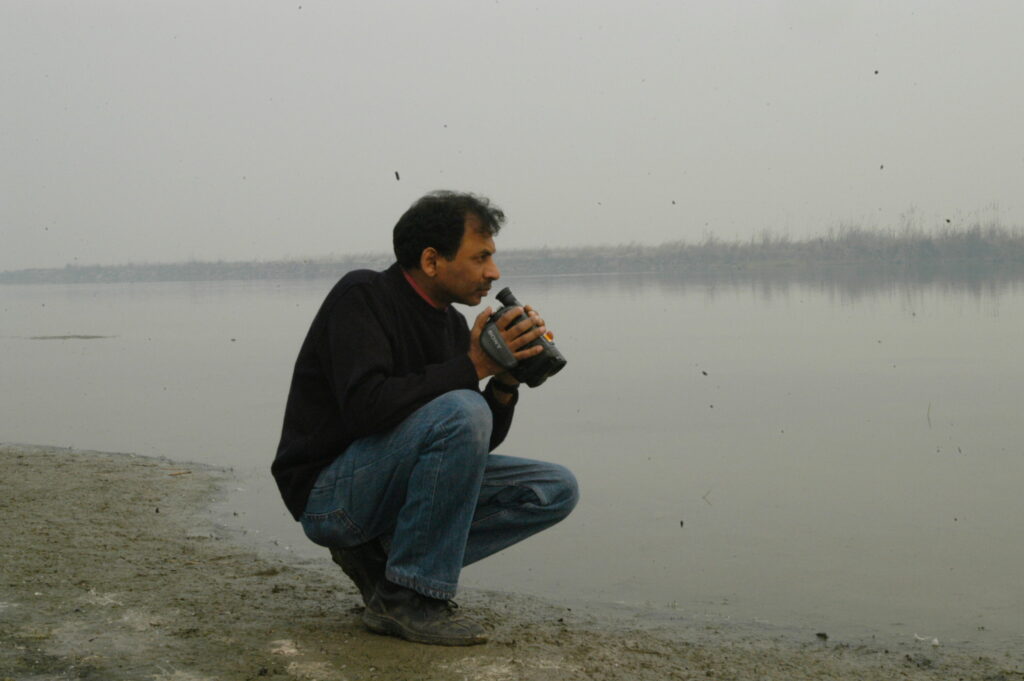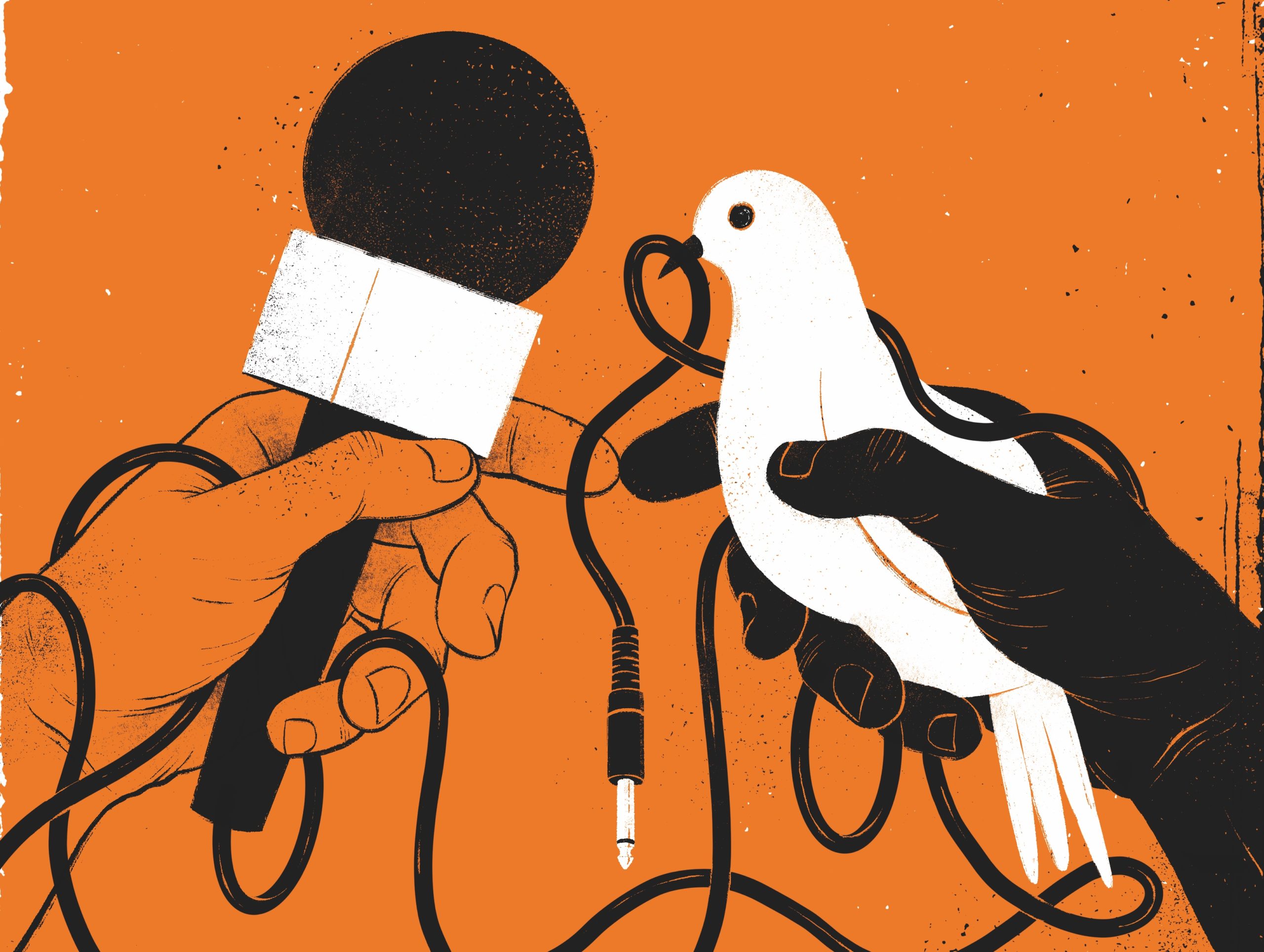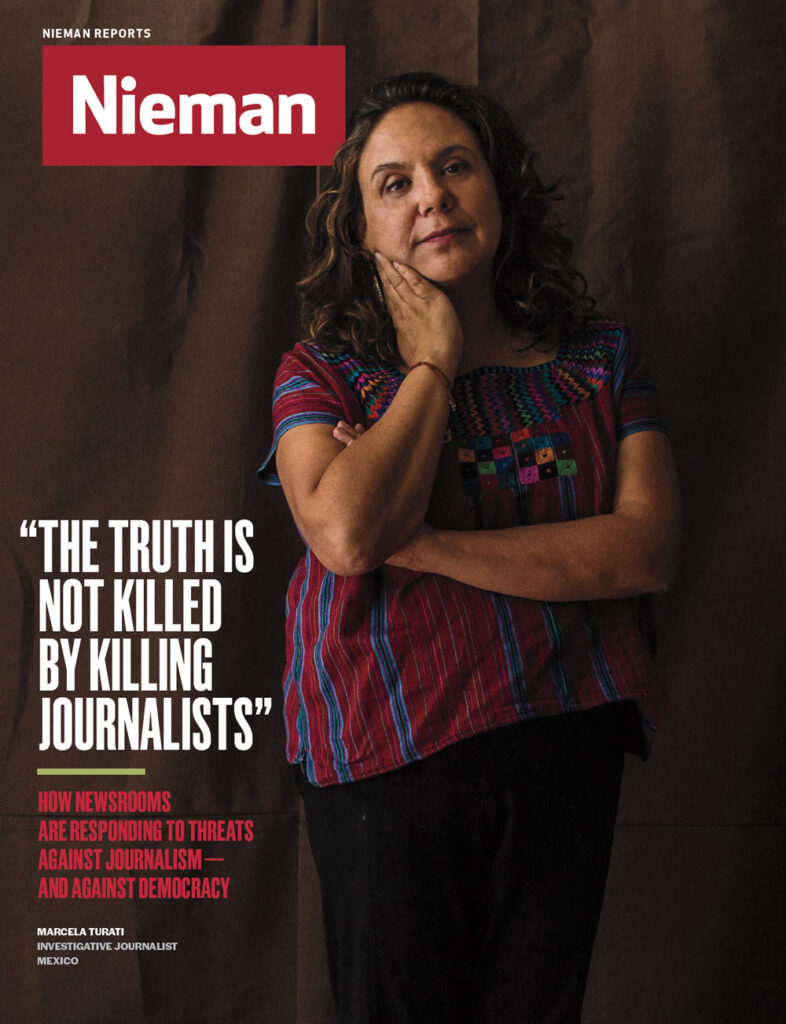Since 2017, journalists from eight newsrooms in five African countries have partnered with Code for Africa (CfA), a network of civic democracy and data journalism labs, to create sensors.Africa, a project that puts air quality sensors at schools, churches, and media houses in major cities across Africa to monitor pollution. Their goal was to collate data on the toxicity of the air and use that information to drive local reporting on the topic.
The project marks the first time that journalists and citizens have had information on how widespread pollution is in countries like Kenya and Tanzania, as well as hyperlocal data on where it is worst. It confirms what many knew anecdotally: Pollutants from local industries are making people sick.
Some of the sensors in Nairobi, Kenya were installed at a community radio station. Station manager Thomas Odhiambo said that people had always suspected that lung disease in the community was caused by industry nearby. One of the stories produced using the sensor data at the radio station was by The Star news outlet, which wrote about the impact of the air pollution from a factory called Accurate Steel Mills on an adjacent school. Air pollution levels greater than 10 times that recommended by the World Health Organization had been recorded there. The story also detailed how the company was required to raise the height of its chimneys so that the toxic fumes would be more widely dispersed.
This project, and so many others like it around the world, exemplify the growing trend of cross-field collaboration, which we define as a partnership involving at least one journalism organization and one civil society organization — usually an advocacy organization but not always — in which they work together to produce content in the service of an explicit ideal or outcome. It’s similar to collaborative journalism in that it brings multiple organizations together and addresses many of the same resource limitations facing journalists, while providing similar benefits. However, unlike a partnership between newsrooms, cross-field collaborations surface complicated ethical questions about the line between journalism and advocacy, especially for journalists schooled in the tradition of objectivity.
Around the globe, cross-field collaborations are becoming more common and more salient because of the fragmented mediascape and the fact that content producers can no longer rely on the usual channels for their work to be seen
Around the globe, cross-field collaborations are becoming more common and more salient because of the fragmented mediascape and the fact that content producers can no longer rely on the usual channels for their work to be seen. Another reason cross-field collaborations are increasing is that investigative projects are becoming more complicated, due to their cross-border nature, the complexity of the malfeasance, and the variety of skills and expertise necessary to undertake them. Partnerships bringing together journalists and organizations from various corners of civil society address these issues.
An additional driver of cross-field collaboration is the role that philanthropy has increasingly played in both journalism and media development around the globe. With their high-level views of the interrelated information ecosystem, funders have seen a convergence in the missions and practices of advocacy and investigative journalism organizations. Leaders in this space include the MacArthur Foundation and Civitates, among others. Academic institutions have been on a parallel track, increasingly finding it beneficial to partner in a more formal and sustained way with journalism organizations, in part to find larger audiences for their research.
A third reason we are likely to see more cross-field collaboration is also arguably the greatest driver of the trend: impact. When organizations spend valuable resources uncovering corruption, abuse, or neglect, they want to see the problem addressed. While advocates have always had impact as an explicit goal, journalists appear to be more willing than ever to accept (and say out loud) that their work can and should result in real change. This is a significant departure for journalists who were trained to maintain a clear separation between their work and activism.
Below I’ll look at each of these trends in detail through the lens of the cross-field collaborations Hanna Siemaszko and I analyzed for our paper, “Cross-field collaboration: How and why journalists and civil society organizations around the world are working together.” Overall, we cataloged 155 such collaborations involving 1,010 entities, based in or somehow including 125 countries spread over six continents. Despite this breadth, we know there are many more projects like this that we didn’t look at — suggesting there is much more to learn about cross-field collaboration as an emerging practice.
Animal Político is a digital investigative news organization in Mexico that covers topics like decreasing access to health care, teenage pregnancy, unemployment, and racial discrimination. It was born on Twitter in 2009 and quickly transitioned to a full-fledged news website in 2010. From its inception, the journalists at Animal Político wanted to build on the relationships with civil society that it had incubated on social media; they wanted to work with academics, advocates, and others not just as sources but as partners.
Part of how they did this was by devoting a page, called El Plumaje, on their website entirely to analysis from various civil society organizations (CSOs). According to Animal Político, El Plumaje was the first and only place in Mexico where non-governmental organizations and other CSOs can get their ideas out to the public in their own words (versus the usual route, which is publishing reports through their own websites and holding press conferences, after which journalists may publish a small item summarizing the findings). The relationships established through El Plumaje have enabled the journalists at Animal Político to work with civil society in other ways, including on projects to better understand and cover Covid-19, to fact-check election claims, and to investigate corruption. It also gives the CSOs access to broader and more diverse audiences than they would have if they published their content only through their own channels.
Animal Político also collaborates with civil society organizations on specific projects, as in their work with World Justice Project, an NGO that works to promote the rule of law around the globe. For nearly five years, they’ve partnered with Animal Político to help tell the stories behind the data in their reports detailing the status of the rule of law in Mexico.
WJP’s work reaches a core audience of “people who already care about the rule of law,” says Leslie Solis, the organization’s research director. “If you write a report, there are certain audiences who will read it, like the academic civil society organizations, or people who are interested in a specific thing,” she adds. “But if you combine your data with storytelling, either through visual narratives, through journalism, or something else, you can reach wider audiences. And you can communicate data that would be more difficult, and you can communicate it in a way to different audiences and create awareness.” In other words, Animal Político puts what can be complex, arcane issues into journalistic formats that enable broader consumption.
Justice can mean many things and goes beyond punishing criminals and rooting out corruption. Animal Político turned WJP’s findings about extreme overcharging for electric services in Mexico into a short video, which included interviews with people who experience unfair price hikes, and a text-based story about how some stopped paying their bills in protest. They also used poll data from WJP’s report to show that most people who experience electricity shortages don’t file formal complaints. Through this partnership, the issue was brought out of niche policy discussions and to the forefront.
In addition to combining forces to reach a broader audience, another reason cross-field collaboration is taking off is because of the increasingly complicated nature of the topics that investigative journalism projects cover.
Factor Daily is a nonprofit news organization in India that covers how science and tech intersect with society. They became a nonprofit to “break free from the news cycle,” as co-founder Pankaj Mishra puts it. This allows them to do projects, rather than just stories, and they dedicate months — sometimes years — to one topic. To report on electronic waste in India, they partnered with Indian NGO Toxics Link, an environmental justice group based in New Delhi. Mishra recounted to us the months they spent in the town of Seelampur, one of the many sites in India with a vast network of waste dumps, working poor, and buyers of the miniscule amounts of precious metals recovered from discarded consumer electronics. Reporting this project meant understanding the economics of the metal industry, the health and environmental repercussions of dismantling the devices, and the broad social forces that drive people to pull their children from school at young ages to do this work, Mishra explained.

Factor Daily’s partnership with Toxics Link spanned all facets of the project: The NGO helped the reporters find people on the ground to interview and observe; they answered technical questions about the various aspects of the process by which the electronics are broken down and circulated; and Factor Daily hosted supplemental technical content from Toxics Link on their website. The result was a multimedia story compiled on a landing page that includes text-based articles, interactive videos — one of which focuses on the children who break down the devices — links to academic sources, and advice to readers on how they can reduce electronic waste.
Mishra described the project as a win-win. Toxics Link “is an organization who would lobby the government and policymakers to take up these issues and things like that,” he says. “We are not that; we are a journalism organization. But our missions are aligned. Our mission is to raise public consciousness about these topics, which is what they also want to achieve. And they believe that what will take them a really long time to articulate in an engaging way, is something which we do as craft.”
Perhaps the most urgent reason that journalists are more likely to collaborate with civil society is for impact. The most common topics of the cross-field collaborations in our sample were corruption and governance, human rights, and the environment. As one would imagine, the people, businesses, and issues that become the subjects of these projects around these topics are generally not operating as they should; these investigations almost always look into malfeasance, wrongdoing, or neglect. Therefore, the desire and need for a project to lead to change is intense.
We defined impact resulting from cross-field collaboration as either accordant or discordant. Accordant impact is a change that is in line with the goals of that project, such as a politician being removed from office or a business being fined for polluting the environment; discordant impact, on the other hand, is a change that is contrary to the goals of a project, like when a journalist is threatened or tax evaders find new loopholes in the law. Accordant impact is more commonly recorded and publicized, though discordant impact is not uncommon.
The journalists we spoke with recognized the tension between the drive for impact and journalistic neutrality that is common to cross-field collaboration. One way they are negotiating that tension is to be clear with their civil society partners from the beginning of a project about everyone’s roles. Journalists are also being careful to let the data speak for itself, and not blur the lines between editorial and advocacy elements. These practices are sometimes written out explicitly and even shared on an organization’s or project’s website.
Another way journalists negotiate the ethical issues raised by working with civil society partners is to speak openly about how journalism is evolving and trusting that the public will see the benefit from these types of partnerships. Miriam Wells, the impact editor at The Bureau of Investigative Journalism, says journalists need to acknowledge that they not completely neutral when it comes to the basic tenets of organized society, and will work with organizations that strive to defend these values. “I think it’s disingenuous to say [journalists] don’t have an agenda at all,” she said during a June 2021 interview. “Obviously, we have an agenda of justice. We have an agenda of truth. But we don’t have a political agenda. … [I suppose] you could say that believing in human rights is a political agenda. And I’d say it’s a lot more gray than a lot of journalists would probably like to think.”
“I think it’s disingenuous to say [journalists] don’t have an agenda at all,” says Miriam Wells, the impact editor at The Bureau of Investigative Journalism. “Obviously, we have an agenda of justice. We have an agenda of truth
One project that had far-reaching impact is the International Consortium of Investigative Journalists (ICIJ)’s FinCEN Files. More than 400 journalists from 110 newsrooms around the globe and a handful of civil society organizations worked together to uncover the myriad trails of illicit money that flow from the crooked and corrupt through the global banking system. In some cases, the major banks that were moving the funds around had been warned by regulators that they could face criminal penalties for “doing business with mobsters, fraudsters or corrupt regimes,” according to the project. ICIJ’s website has no fewer than 25 articles cataloging the impact that can be linked to that project, including crackdowns, new laws, and a Nobel nomination for the project. In one example, the files obtained showed how shell companies had allowed high-level officials in Niger to funnel more than $100 million from the defense budget into private accounts, resulting in major political and social backlash. In another example, the project provided the impetus for passage in the United States of the Corporate Transparency Act, which mandates that companies incorporated in the U.S. disclose who owns them and who profits from them. Legislators who voted for it cited the FinCEN Files project in their supporting statements.
Though the scope of the FinCEN Files is much larger than most collaborations — and its impact therefore more salient — ICFJ’s dedication to cataloging the impact is also remarkable and unusual; indeed, even though important changes may result from an investigation, they are not always tracked and reported out like they were in this case. We identified a few reasons for this. Impact from projects involving multiple partners across fields is often diffuse. There are multiple audiences accessing content from various platforms, and tracking all of them, even using basic online metrics, can be expensive and time consuming. Also, the data are often qualitative, and therefore difficult to capture programmatically; when a law is changed or a person is jailed it needs to be captured anecdotally. Finally, impact often occurs months or even years after a project ends and can take place hundreds of miles away, making it less likely that those changes will be captured and linked to the project.
In the report we recommend a few ways to ensure that impact is captured. First, teams should build impact tracking into the project agreement from the beginning and get dedicated funding for it if possible. Second, you need to have a person who is in charge of capturing impact, at least part-time. Third, it helps to have one central repository for project impact and require all organizations to provide impact data.
As the global mediascape evolves and financial difficulties continue to force cutbacks and layoffs at news organizations, we think cross-field collaboration will only continue to grow. There will be more projects like the ICFJ’s deep dive into the global banking system that require an all-hands-on-deck approach because the stories are too complex for one news organization to handle on their own. It’s a trend that news organizations should welcome as it will help important information reach mass audiences in the years to come.




